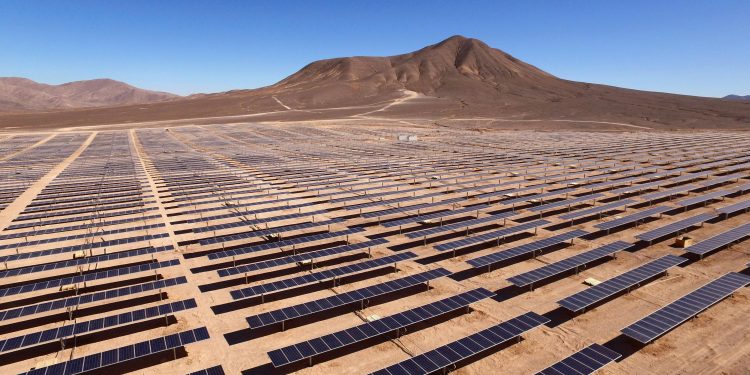In a world where the sun rises each day without fail, the promise of harnessing its boundless energy has captivated the imagination of innovators and environmentalists alike. As the golden rays stretch across continents, solar energy emerges not just as a beacon of sustainability but as a formidable competitor to the age-old dominion of traditional utilities. This radiant shift in the energy landscape invites a closer examination of how solar power, once relegated to the fringes of practicality, is now challenging the very foundations of conventional energy sources. From sun-drenched deserts to urban rooftops, solar energy is carving out its place in the global power dynamic, illuminating a path towards a more sustainable future. As we explore this evolving narrative, we delve into the intricacies of how solar energy stands toe-to-toe with traditional utilities, reshaping the way we think about power generation and consumption worldwide.
Solar Energys Global Stride Against Conventional Power
Across the globe, solar energy is rapidly transforming the landscape of power generation, challenging the long-held dominance of traditional utilities. The primary drivers of this shift include technological advancements, decreasing costs, and increasing environmental awareness. In regions blessed with abundant sunlight, such as parts of Africa, Asia, and the Middle East, solar power has emerged as a reliable and sustainable alternative. It provides not only energy security but also an opportunity to electrify remote areas previously underserved by conventional power grids.
- Cost-Effectiveness: The cost of solar panels has plummeted over the last decade, making it a competitive option even without government subsidies.
- Technological Innovations: Advances in battery storage and solar panel efficiency are making solar power more viable for continuous energy supply.
- Environmental Impact: Solar energy offers a clean, renewable source of power, significantly reducing the carbon footprint compared to fossil fuels.
- Decentralized Power: Solar energy supports decentralized energy systems, empowering communities to generate their own electricity independently.
As the global community becomes increasingly conscious of the environmental implications of energy choices, the shift towards solar power is not just a trend but a necessary evolution. This dynamic transition reflects a broader movement towards sustainable living and responsible resource management, ensuring that energy demands are met in harmony with the planet’s ecological balance.

Unveiling the Economics of Solar Versus Traditional Utilities
In the global energy landscape, solar energy is carving out a competitive niche alongside traditional utilities. One of the standout features of solar power is its decreasing cost curve. Over the past decade, the cost of solar panels and installation has plummeted, making it a viable option for both residential and commercial users. Meanwhile, traditional utilities often face fluctuating prices due to fuel costs and regulatory changes. As solar technology continues to advance, economies of scale and innovation are further driving down costs, enhancing its competitive edge.
Beyond cost, the environmental and strategic benefits of solar energy are significant. Solar power is inherently clean, reducing carbon footprints and contributing to global sustainability goals. Unlike fossil fuel-based utilities, solar energy offers energy independence by reducing reliance on imported fuels. Additionally, solar installations can be decentralized, empowering communities to produce their own energy. These advantages are attracting governments and corporations to invest in solar infrastructure, recognizing it as a key player in the future energy mix.
- Cost Efficiency: Solar prices continue to drop.
- Environmental Impact: Reduces carbon emissions.
- Energy Independence: Local energy production reduces reliance on imports.

Harnessing Innovation: Solar Advancements and Challenges
As the world seeks sustainable energy solutions, solar power stands at the forefront, challenging traditional utilities with its potential to transform energy landscapes. Innovation in photovoltaic technology has significantly increased the efficiency and affordability of solar panels, making them a viable competitor to fossil fuels. Countries like Germany and China are leading the charge, with large-scale solar farms and urban solar initiatives that are reshaping their energy profiles. This shift is supported by the declining cost of solar energy production, which in some regions, now rivals or even undercuts traditional utility rates.
However, the path to widespread solar adoption is not without its challenges. The intermittent nature of solar power requires advancements in energy storage solutions to ensure reliability. Additionally, there is a need for substantial investment in infrastructure to integrate solar energy into existing grids effectively. Key areas of focus include:
- Developing advanced battery technologies for energy storage
- Enhancing grid flexibility to accommodate solar input
- Innovating in solar panel recycling to address environmental concerns
By addressing these challenges, solar energy can continue to position itself as a formidable contender against traditional energy sources, driving a global shift towards cleaner, renewable power.

Strategic Pathways for Solar Adoption in Utility Markets
In the quest to integrate solar energy into utility markets worldwide, several strategic pathways have emerged that redefine how solar competes with traditional energy sources. Key among these strategies is the emphasis on technological innovation. By leveraging advancements in photovoltaic efficiency and battery storage, solar power can offer consistent energy output, even during peak demand times. This not only ensures reliability but also enhances grid stability, making solar a viable competitor against conventional utilities.
Moreover, innovative financial models are proving instrumental in accelerating solar adoption. Power Purchase Agreements (PPAs) and community solar programs are examples that allow consumers to engage with solar energy without the burden of upfront costs. Feed-in tariffs and net metering policies further incentivize solar adoption by providing economic benefits to solar producers, effectively narrowing the competitive gap between solar and fossil fuel-based utilities. As these strategic pathways continue to evolve, they pave the way for a more sustainable and economically balanced energy future.
Closing Remarks
As the sun sets on our exploration of solar energy’s place in the global energy landscape, it becomes clear that this radiant power source is more than just a fleeting trend. It stands as a formidable contender in the arena of traditional utilities, reshaping how we harness and consume energy. While challenges remain, the relentless march of innovation and policy support propels solar energy into the spotlight, illuminating pathways to a more sustainable future. As we continue to witness the unfolding of this energy revolution, the question is not if solar energy will redefine the global energy paradigm, but how quickly it will do so. In this evolving narrative, solar energy is no longer a distant dream but a vibrant reality, casting a bright light on the possibilities of tomorrow.

































